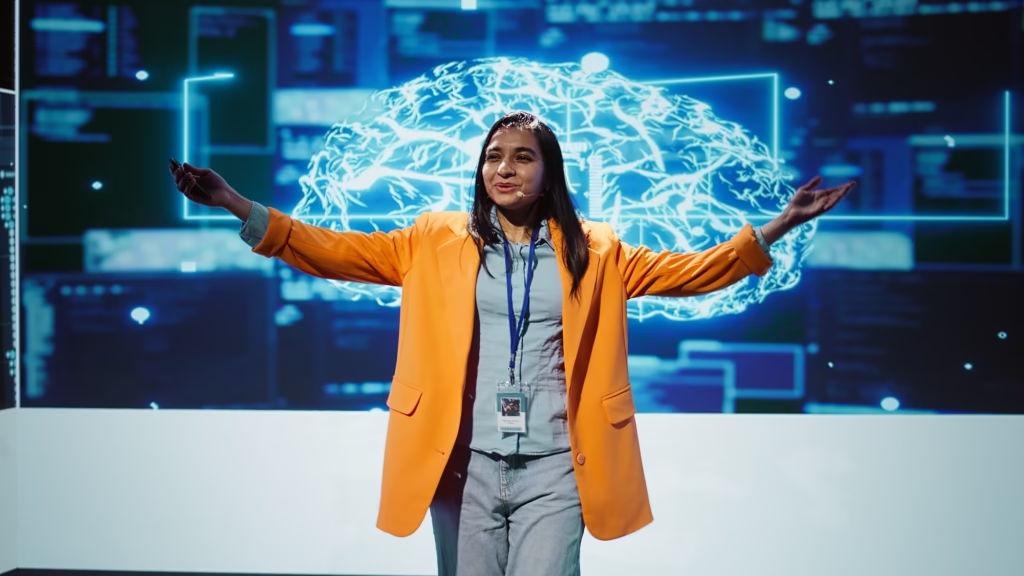
Introduction to India’s Economic Landscape in 2025
As we look towards the year 2025, India’s economic landscape presents a dynamic picture characterized by substantial growth potential. Current estimates indicate that India is on the path to becoming one of the world’s largest economies, with projections highlighting a robust GDP growth rate driven by various sectors, particularly information technology (IT) and artificial intelligence (AI). The implementation of strategic policy measures aimed at enhancing economic stability is expected to significantly contribute to this promising outlook.
The IT sector, a cornerstone of India’s economic framework, has been a primary catalyst for innovation and productivity. As India invests heavily in digital infrastructure and technology, the relevance of IT jobs will continue to escalate. The demand for skilled professionals adept in AI and related technologies is anticipated to surge, reflecting the evolving nature of the job market. The fusion of AI with traditional job roles is reshaping the employment landscape, creating new opportunities for skilled workers across diverse industries.
Moreover, the global economy is also witnessing a transformative transition towards digitalization, emphasizing the necessity for nations to adapt. India’s alignment with these global trends through initiatives such as “Digital India” aims to position the country as a leader in the AI sphere. This alignment will not only bolster the nation’s GDP growth but also establish India as a formidable player in the international IT landscape.
In light of these developments, stakeholders must remain vigilant regarding macroeconomic indicators, such as investment inflows, productivity levels, and technological advancements. The ongoing investments in the AI sector are poised to propel India towards achieving its ambitious economic goals, thereby solidifying its status in the global market by 2025. As these trends unfold, the future of AI, job creation in the IT sector, and sustained GDP growth will significantly shape India’s economic narrative.
The Rise of Artificial Intelligence in India
In recent years, the rise of artificial intelligence (AI) in India has garnered significant attention, propelled by a confluence of factors including a burgeoning startup ecosystem, government initiatives, and the involvement of established technology firms. This technological revolution is transforming various sectors, boosting productivity, and supporting GDP growth. As the nation positions itself as a key player in the global AI landscape, the implications for the future workforce and IT jobs are profound.
The Indian government has recognized the potential of AI as a catalyst for economic development and has launched several initiatives aimed at fostering research and innovation in this domain. Programs like the National AI Strategy and the establishment of centers for excellence in AI research are instrumental in harnessing the capabilities of this technology. By promoting public-private partnerships, the government is facilitating collaboration between academic institutions and tech companies, encouraging breakthroughs that can lead to practical applications across industries.
Moreover, the growth of AI-focused startups is a testament to the entrepreneurial spirit in India. These startups are leveraging AI to address challenges in diverse fields such as healthcare, agriculture, and education. For instance, AI is being used to enhance diagnostic accuracy in healthcare, optimize crop yields in agriculture, and personalize learning experiences in education. This proliferation of AI applications not only drives innovation but also creates new IT jobs that demand specialized skill sets, indicating a shift in workforce requirements.
As the AI landscape continues to evolve, it is expected to significantly influence the future of work in India. Companies will increasingly seek professionals who possess a deep understanding of AI technologies, data analysis, and machine learning. The ability to adapt to these changes will be crucial, setting the stage for a dynamic and continuously evolving job market.
IT Jobs: Opportunities and Challenges Ahead
The future of AI signifies a transformative phase for the information technology (IT) job market in India, particularly as the nation marches toward 2025. With the rapid advancements in artificial intelligence, there is a notable surge in the demand for skilled IT professionals. Jobs that were once considered traditional are evolving, and new roles are emerging, influenced significantly by AI technologies. These roles include AI specialists, data scientists, machine learning engineers, and automation experts. They are poised to play crucial roles in the development, deployment, and maintenance of AI systems that drive efficiency across various sectors.
To thrive in this evolving landscape, it is essential for the current and future workforce to acquire relevant skills. Educational institutions and training programs must adapt to the demands of the job market by integrating AI, machine learning, and data analytics into their curricula. Continuous professional development will be crucial, as traditional IT roles will require a blend of technical expertise and knowledge in AI and related fields. Professionals will need to embrace lifelong learning to remain competitive as the future of AI continues to reshape the industry.
However, the transformation does not come without challenges. The expansion of AI and automation technologies raises concerns about job displacement in certain areas of the IT sector. While AI can enhance productivity and lead to GDP growth, it may render some positions redundant or significantly transform job responsibilities. As a result, the workforce must be prepared to pivot, with a strong emphasis on re-skilling and upskilling initiatives. Organizations must forge partnerships with educational institutions to create targeted training programs, ensuring their employees are equipped with the skills necessary to navigate the changing job landscape effectively.
In conclusion, the future of IT jobs in India is both promising and fraught with challenges. While opportunities for new roles abound, proactive measures are needed to address the realities of job displacement and the importance of re-skilling. By fostering an adaptable workforce, India can harness the benefits of AI advancements, steering toward a dynamic and inclusive job market by 2025.
The Contribution of IT and AI to GDP Growth
The integration of Information Technology (IT) and Artificial Intelligence (AI) is poised to significantly influence India’s GDP growth in the forthcoming years. As one of the fastest-growing economies in the world, India is harnessing technology to elevate productivity across various sectors. Recent statistics suggest that the IT sector contributes approximately 8% to India’s GDP, a figure projected to rise as digital transformations accelerate. Furthermore, the Digital India initiative underscores the government’s commitment to fostering a robust digital ecosystem, which is critical for sustainable economic growth.
Looking toward 2025, it is estimated that AI could boost India’s GDP by $957 billion, thus heralding a new era of economic efficiency. Automation and AI-driven tools are expected to enhance productivity levels across industries, from manufacturing to agriculture. For instance, the use of AI in supply chain management is predicted to reduce operational costs and improve service delivery in businesses, thereby contributing to overall economic performance.
The emergence of tech-driven jobs is another crucial aspect of this integration. A significant number of new IT jobs are projected to arise from the development and maintenance of AI systems. This transformation not only implies direct employment opportunities but also fosters ancillary roles that support the growing technology landscape. The demand for skilled professionals, including data scientists and AI specialists, highlights the emphasis on upskilling and reskilling the workforce to meet future market needs.
Ultimately, the synergistic effects of IT and AI will likely position India as a global leader in digital innovation, fundamentally enhancing its economic landscape and contributing to robust GDP growth by 2025. These advancements are not merely incremental; they signify a paradigm shift that will redefine productivity and economic dynamism across the nation.
Government Policies and Support for AI and IT Sectors
The Indian government has recognized the potential of artificial intelligence (AI) and information technology (IT) as key drivers of economic growth and has initiated several policies and programs to bolster these sectors. The emphasis on harnessing AI’s capabilities aligns with broader economic objectives, particularly in enhancing GDP growth and creating IT jobs. Such initiatives are pivotal for positioning India as a global leader in technology and innovation.
One of the cornerstone policies is the National Strategy for Artificial Intelligence, introduced by NITI Aayog. This strategy aims to promote research and development in AI while emphasizing applications that can address challenges in sectors such as healthcare, agriculture, and education. By fostering innovation through research grants and public-private partnerships, the government seeks to stimulate economic activity and create a robust pipeline of skilled professionals ready to meet the growing demand for IT jobs.
Additionally, the government has implemented various skill development initiatives, such as the Digital India program, which focuses on equipping the workforce with essential digital skills required in the AI landscape. This initiative not only aims to enhance employability but also addresses the need for specialized talent in emerging technologies. Progress in skill development is crucial as companies refine their strategies to integrate AI, thereby necessitating a workforce that is both adaptable and proficient in these technologies.
Furthermore, the government has allocated substantial investments in infrastructure to support AI and IT growth, ensuring that the necessary resources are in place to nurture startups and established enterprises alike. With policies advocating for research and development incentives, alongside streamlined regulatory frameworks, the Indian government is laying the groundwork for a thriving ecosystem. As a result, these combined efforts are expected to significantly contribute to the nation’s GDP growth while also expanding the horizon for IT jobs in the coming years.
Investment Trends in AI and IT Industries
The investment landscape in India’s AI and IT sectors is witnessing significant transformation as the country positions itself as a global hub for technology and innovation. With a rapidly growing digital economy, the future of AI is intertwined with the increasing influx of foreign direct investment (FDI) and venture capital. According to recent statistics, India has emerged as one of the leading destinations for startups in the AI realm, capturing over $9 billion in investments in the last few years alone.
Foreign investors are increasingly recognizing the potential of the Indian market, with substantial investments flowing into companies focusing on machine learning, data analytics, and other AI-driven technologies. For instance, global tech giants like Google and Microsoft have established partnerships with Indian firms to foster innovation in AI applications. This collaboration not only boosts the companies’ capabilities but also has far-reaching implications for GDP growth and the overall economy. The surge in FDI reflects a confidence in India’s ability to generate quality IT jobs, providing a conducive environment for technological advancements.
Moreover, venture capital has played a crucial role in shaping the landscape of the Indian AI and IT industries. The venture capital ecosystem has become increasingly vibrant, supporting hundreds of startups that are harnessing AI to solve real-world problems. Noteworthy success stories, such as those from firms like Zomato and Paytm, underline the innovative potential present in the Indian tech environment. These companies have successfully attracted investments that not only enhance their business models but also contribute to job creation in the tech sector.
In conclusion, as investment trends continue to evolve, the fusion of AI and IT industries in India augurs well for future economic performance. The synergistic growth driven by investments is likely to play a pivotal role in stimulating GDP growth and expanding job opportunities in the technology sector.
Impact on Other Sectors: A Broader Perspective
The growth of Artificial Intelligence (AI) and Information Technology (IT) in India has far-reaching implications, significantly impacting various sectors beyond just technology. This development promotes cross-industry integration, fostering an environment where businesses across numerous sectors increasingly leverage AI-driven solutions. As organizations adopt these technologies, they experience enhanced productivity and efficiency, creating a culture that values innovation and adaptability.
One of the most notable effects is seen in the manufacturing sector, where AI facilitates predictive maintenance, optimizing operations and minimizing downtime. Industries implement AI algorithms to forecast potential machine failures, allowing for timely interventions that save both time and resources. Similarly, in the agricultural domain, AI is revolutionizing farming practices through precision agriculture, leading to increased yields and improved food security. The incorporation of IT solutions enables farmers to analyze weather patterns, monitor crop health, and automate irrigation processes, contributing significantly to GDP growth.
The retail sector also undergoes transformation, with businesses utilizing AI for personalized customer experiences. Enhanced data analytics help retailers tailor their offerings to consumer preferences, driving sales and improving customer satisfaction. Furthermore, integrating IT infrastructure in retail operations leads to streamlined supply chains, reducing costs and fostering economic diversification. Such advancements are essential for developing resiliency in an evolving market.
On the employment front, the surge in IT jobs arises from cross-sector technological adoption, creating new opportunities in fields ranging from healthcare to education. Skilled professionals are increasingly in demand as industries seek to harness AI capabilities. The focus on upskilling the workforce ensures that employees are equipped with the necessary competencies to thrive in this tech-centric environment. As these sectors evolve, they contribute collectively to India’s GDP growth, highlighting the interconnected nature of advancements in technology and overall economic prosperity.
Global Comparisons: India’s Position in the IT and AI Arena
India has emerged as a significant player in the global IT and AI sectors, characterized by a robust workforce, a burgeoning startup ecosystem, and a rapidly growing digital infrastructure. When compared to leading nations such as the United States and China, India’s strengths lie in its large pool of skilled IT professionals and cost-effective services. This advantageous position allows Indian companies to deliver services at competitive rates without compromising quality, fostering substantial growth potential in both local and international markets.
Nevertheless, challenges persist amid these strengths. Competition from countries like China, which has made massive investments in AI technologies and infrastructure, poses a formidable threat to India’s aspirations. China’s aggressive pursuit of innovations in AI applications, particularly in areas such as facial recognition and smart cities, showcases its commitment to leading the global AI race. In contrast, India’s focus has predominantly been on software services rather than hardware and deep tech development, which is crucial for advancing the overall capabilities of the AI sector.
Opportunities for growth are plentiful as well. With an increasing emphasis on digital transformation across various industries, the need for innovative IT solutions and AI applications is on the rise. India’s existing IT jobs landscape is witnessing a shift, as companies seek professionals skilled in emerging technologies such as machine learning, data analytics, and blockchain. This evolution presents a compelling opportunity for the nation to enhance its competitive edge by aligning educational initiatives with industry demands, thereby driving GDP growth and enriching the skillset of its workforce.
As India moves towards 2025, it will be essential for policymakers and industry leaders to harness these strengths and opportunities while addressing inherent weaknesses to bolster its position in the global IT and AI arena.
Conclusion: Navigating Towards a Bright Future
As we reflect on the future of AI, IT jobs, and GDP growth in India by 2025, it becomes evident that a multifaceted and collaborative approach is essential for realizing the full potential of these dynamic sectors. The integration of artificial intelligence into various industries promises significant advancements that could propel economic growth. However, to ensure that these technological advancements translate into tangible benefits for the nation, a united effort involving the government, private sector, and educational institutions is necessary.
The government’s proactive policies will play a crucial role in creating a conducive environment for the growth of IT jobs and AI innovations. This includes fostering a regulatory landscape that encourages investment while supporting startups and established firms alike. Additionally, establishing frameworks for ethical AI use is paramount to ensuring that technological advances benefit society as a whole rather than leading to unforeseen challenges.
The private sector must invest in future-proof training programs that equip the workforce with essential skills such as data analytics, machine learning, and cybersecurity. As the demand for skilled professionals increases with advancements in AI, collaboration with educational institutions will fill the skill gap and prepare graduates for the emerging job market. This symbiotic relationship can significantly contribute to sustaining GDP growth by enhancing productivity and innovation across various sectors.
Moreover, fostering a culture of continuous learning and adaptation will ensure that the workforce remains relevant in a rapidly changing environment. Stakeholders must embrace the idea that the future of IT jobs depends on the synergy between technology and human creativity. As we navigate the complex landscape ahead, a vision centered on collaboration, innovation, and inclusion will drive India’s journey toward achieving a prosperous future in 2025 and beyond.








